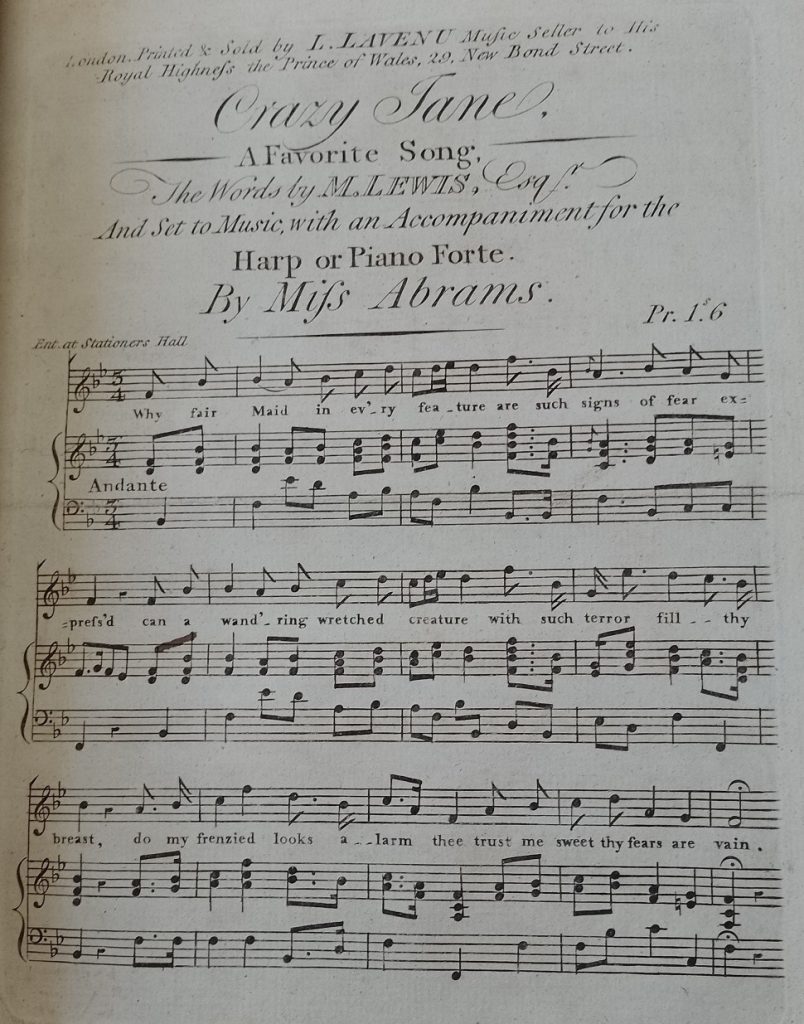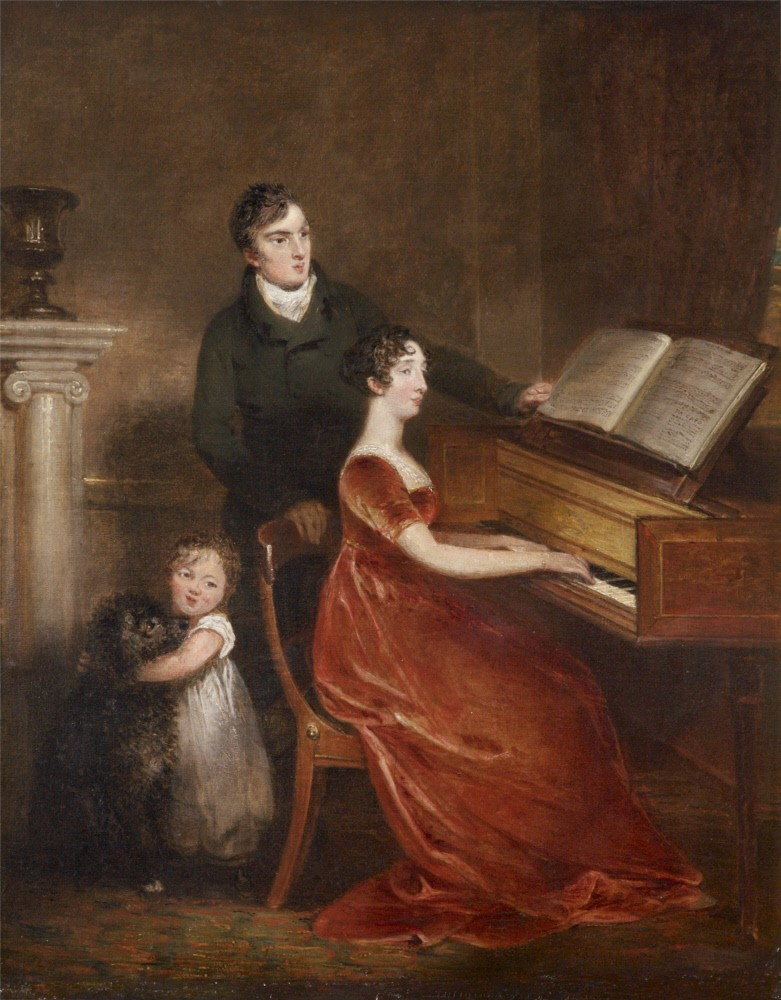Killerton in Devon holds Lady Lydia Acland’s music collection, which includes the score to this popular song called Crazy Jane! Crazy Jane, along with Mad Bess and Crazy Sally, were fashionable fictional characters in the late 18th and early 19th centuries. They were part of a genre of music known as ‘compassionate songs’ (Rana 2012).

Crazy Jane! A favorite ballad (1800) Set to music, with an accompaniment for the harp, or piano forte, the words by M.G. Lewis Esqr., music by Harriett Abrams. Part of the Lady Lydia Acland Collection at Killerton House
With words written by Matthew Gregory Lewis and music by Harriett Abrams, this song tells the story of a heartbroken woman experiencing mental distress. Despite portraying Jane as overly emotional, hysterical and unstable the song was intended, in part, to encourage empathy for Jane’s situation and urge people not to fear her. Songs like this, part of a wider moral education discourse, were written to discourage both men and women from entering into relationships outside of marriage.
The contradictory and often stigmatising attitudes towards mental health that the song conveys still resonate today.
We commissioned soprano soloist Mhairi Lawson to sing, play piano and record the song Crazy Jane! Listen to it here:

Sir Thomas Dyke Acland, 10th Bt MP (1787-1871), his Wife Lydia Elizabeth Hoare (1786-1856) and their Son, later Sir Thomas Dyke Acland (1809-1898) by Henry Singleton RA (London 1766 – London 1839). ©National Trust Images
Alternative reading
We invited the project team to offer their own personal reflections on some of the stories in Everywhere and Nowhere. In the section below researcher Dr Jenni Hunt offers an alternative reading of the song Crazy Jane.
I have experienced periods of mental ill-health myself, and I am neurodivergent. I am very aware how society can judge people with disabilities and differences, and this story resonates with me as it shows how attitudes are being challenged and reinforced by culture.
It is important that this story is told because it is a story that is complex – it both aims to prevent stigma, and in itself reinforces stigma of a different kind. It is a ‘compassionate song’, designed to get people to empathise with those with mental illness, something which is still vitally needed today. It engages with how disabled people are often viewed as something frightening. The stigma around disability can still lead to harassment in the street and online. Improvement has been made in some ways, but at times people still can be very quick to judge, especially around mental health conditions.
Reference:
Rana, L. (2012) Music and Elite Identity in the English Country House, c.1790-1840. University of Southampton